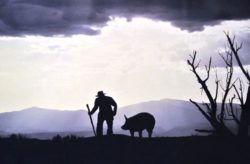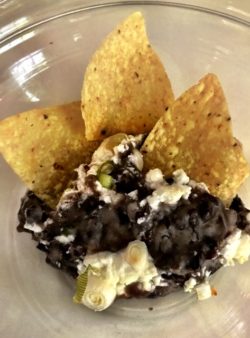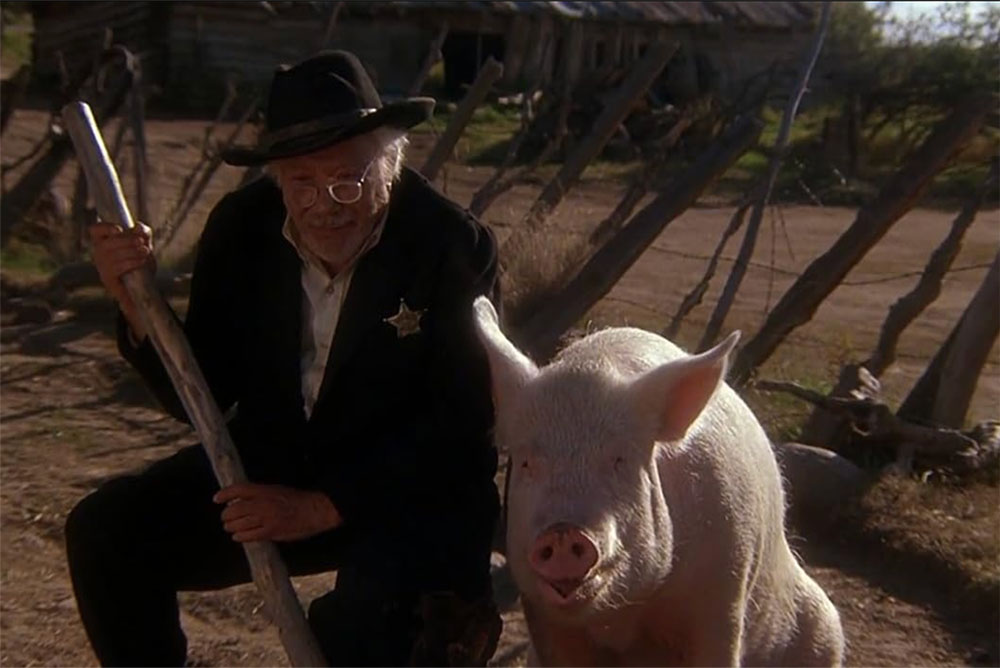After owning one of the best cooking stores in the US for 47 years—La Cuisine: the Cook’s Resource, in Alexandria, Virginia—Nancy Pollard now writes Kitchen Detail, a blog about food in all its aspects—recipes, film, books, travel, superior sources and food-related issues. She and her husband, the Wine Maniac, have recently moved to Italy.
SINCE WE HAVE our grandsons here, and it is so hot, we are streaming, the 21st-century version of going to the video store. Of course I want the boys to see movies about food beyond Ratatouille and Willie Wonka and the Chocolate Factory. The inner change-the-world part of me wants them to look at sustainability in our food sources, best food choices, and consequences in what we eat—but not be too preachy. So I found some documentaries: What’s on Your Plate?, Bite Size, A Plastic Ocean, and then the juiced-up film from a book my children loved, Cloudy With a Chance of Meatballs.
Lessons From Beans and Water
But the surprise film that provoked some interesting conversations was The Milagro Beanfield War. It is based on a politically acute comic novel by  John Nichols. Apparently the film is not as good as the book, according to critics. But as a Capra-esque fable directed by Robert Redford, my kids loved it. This is not a powerful or dramatic film, but rather one that can just be enjoyed as a tale about life and the beyond, about growing beans, and who owns water. And of course it pits a downtrodden town against a wealthy land developer. It’s not a bad thing for kids to see that a community can be formed around an issue that is necessary to human life. Not bad either that they see that the road to this community’s salvation is full of potholes. And some of us enjoyed seeing Christopher Walken and Melanie Griffith before they became uber-famous.
John Nichols. Apparently the film is not as good as the book, according to critics. But as a Capra-esque fable directed by Robert Redford, my kids loved it. This is not a powerful or dramatic film, but rather one that can just be enjoyed as a tale about life and the beyond, about growing beans, and who owns water. And of course it pits a downtrodden town against a wealthy land developer. It’s not a bad thing for kids to see that a community can be formed around an issue that is necessary to human life. Not bad either that they see that the road to this community’s salvation is full of potholes. And some of us enjoyed seeing Christopher Walken and Melanie Griffith before they became uber-famous.
On a more sophisticated level, water as salable commodity is an Anglo-American concept, whereas in other populations (Hispanic in this case), water is a shared resource for agriculture and community sustainability. And as a minor theme, the importance of journalism over media marketing is hard to miss, even if you’re a kid.
On a more current-events note, a while back I read a revealing story from the LA Times. This controversy has reached a new level of Karma Spanking. Thousands of acres of land in the Southwestern region of the US is being bought by Arab companies to take advantage of the antiquated American riparian rights laws. Alfalfa, a water-intensive crop, is currently grown on these acres, to the detriment of communities who need the water. The harvest from the crops is shipped to Saudi Arabia and the Arab Emirates. Field wars aren’t always fiction.
 Back at the Movies
Back at the Movies
Out of nostalgia I dug up the recipe that we used to make for home film watching and family get-togethers. And as fate would have it, it is based on black beans and goat cheese. What could be more relevant to the charming Milagros Beanfield film?
This is a recipe from a book written in 1986 by Carolyn Dille and Susan Belsinger, titled New Southwestern Cooking. We will be presenting it again for a new generation of food film watchers.
Black Beans With Goat Cheese and Jalapeños

- 1 pound black beans, sorted and rinsed if needed
- 3 garlic cloves, peeled
- 2 large epazote leaves or ½ teaspoon dried epazote or 1 large bay leaf
- Sea salt
- 2 to 4 jalapeño peppers, stemmed, seeded, and finely diced
- 2 garlic cloves finely minced
- ½ teaspoon cumin seed, toasted and ground
- 12 ounces mild goat cheese
- 2 bunches scallions
- Soak beans several hours or overnight in about 3 quarts of water.
- Drain, then cover them with 2 inches of water. Add the three garlic cloves and epazote or bay leaf.
- Cover and cook until the beans are soft enough to mash (this can take 1 to 2 hours).
- Salt the beans for taste and allow to stand for 20 minutes.
- Preheat oven to 350F.
- Drain the beans and reserve the cooking liquid.
- Mash the beans well, adding liquid to make a fairly loose paste.
- Mix the peppers, minced garlic, and cumin with the beans and add more salt if necessary.
- Crumble the goat cheese and, separately, trim and slice the scallions thinly.
- Layer about one-third of the beans in an ovenproof casserole.
- Cover with about one-third of the crumbled goat cheese, then one third of the scallions.
- Make another layer with a third of the beans and a layer with the second third of the cheese and scallions
- Cover with the remaining beans and bake for 15 to 20 minutes. The beans should be heated through.
- Just before serving, sprinkle the remaining goat cheese and sliced scallions on top.
- It is best to mash the beans using a potato masher or a large mortar and pestle—a ricer does not work.
- This is an obvious match for corn chips but also makes a great taco filling with pork or chicken.
- I have used it for quesadillas too.
MyLittleBird often includes links to products we write about. Our editorial choices are made independently; nonetheless, a purchase made through such a link can sometimes result in MyLittleBird receiving a commission on the sale. We are also an Amazon Associate.



 Back at the Movies
Back at the Movies